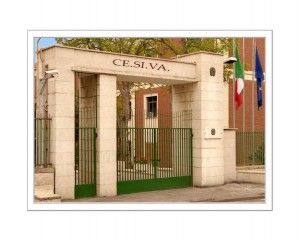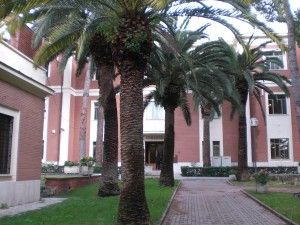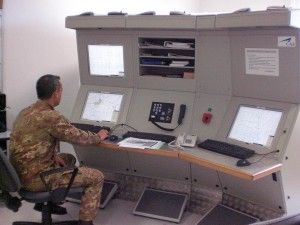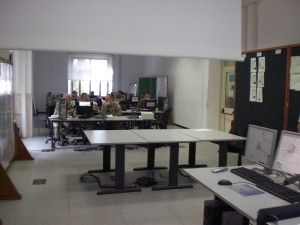 Future is always unpredictable, particularly when it comes to think about the best tactic to use on the battlefield.
Future is always unpredictable, particularly when it comes to think about the best tactic to use on the battlefield.
How to cope with the amount of challenges one has to face once deployed into an operational theatre is undoubtedly the main concern of every soldier, and – far sooner than that – this issue is still representing the crucial point of every trainer and training program.
To achieve success on the battlefield the crucial step in the training process is to rehearse procedures and tactics throughout an efficient simulation system. A question arises immediately: how much perfect can a simulated scenario be? Who can shape it at its best? Could it represent a realistic model of the real scenario one is going to face?
Cesiva, based in Civitavecchia (Roma), has worked out very successfully a compromise between the necessity to train soldiers in the more realistic way – according to duties and tasks they have to fulfill during deployment – and the assumptions a simulation system imposes in terms of replication of conditions a soldier could have to face across the battlefield.
 Starting from the concept of “adapting means to ends”, as taught in the latter 19th century by the brilliant German General Helmut Von Moltke, creator of the modern staff procedures of leading armies on the field, Cesiva has developed a specific modeling and simulation system addressing the whole range of Armed Forces ranks. The system itself is aimed to train command posts and staff in order to enable them to practice and master the entire spectrum of the C2 domain (Command and Control functions) in accordance with the related tasks they have to achieve to accomplish successfully their mission.
Starting from the concept of “adapting means to ends”, as taught in the latter 19th century by the brilliant German General Helmut Von Moltke, creator of the modern staff procedures of leading armies on the field, Cesiva has developed a specific modeling and simulation system addressing the whole range of Armed Forces ranks. The system itself is aimed to train command posts and staff in order to enable them to practice and master the entire spectrum of the C2 domain (Command and Control functions) in accordance with the related tasks they have to achieve to accomplish successfully their mission.
The centre, which has served as the Italian Army War School until 2003, is a highly specialized environment focused in modeling and simulation procedures, which offers sophisticated systems and an outstanding high level of professionalism to all those Army units in the training cycle before deployment.
On the European map of military training institutes Cesiva is at the top level in terms of development of simulation process, and very soon it could become a point of reference for educational and training activities, also in the NATO environment. Cesiva indeed could really represent the future Tradoc (Training and Doctrine Centre) in Europe.
Simulation is nothing without modeling
The requisite to develop a simulation system is dictated by the necessity to make available to the staff a set of coherent and consistent background references – according to the operative scenario – to assist them in properly assessing the possible courses of action. The more the battlefield is confused (as always happens during an asymmetric operation) the more the staff need to rely on the possibility to examine every possible option the enemy could produce. Once created, the simulation mock-up backs the decision process and helps to solve the operational dilemma.
Given for granted that the real scenario is a very complex environment made by many different small events, any element of the real world has to be modeled before being used as a reproduction of the operational battlefield. Cesiva does it, having built a coherent reference model for every scenario by inserting all the related parameters in a specific system fully computerized.
This means that men, operational units and Command Posts are put in place on a fictitious geographic area and are enabled to share data among them. This process is the so-called modeling activity.
Once a model has been created, every parameter has to be checked and double checked again to be tested as correct. This is the properly simulation process. Thus simulation is nothing without modeling.
 In order to set a perfect sharing system in the fictitious scenario Cesiva has developed a specific software, that is called MORABINET, which allows to share information on the ground very easily while performing a videoconference (VTC) or communicating through a chat line. It is a sort of combat radio net which has shown to be very successful. During a military exercise, the primary training audience (PTA), for example, can keep in radio contact – as the real situation would have imposed – with the LOCON (Lower Control) using the MORABINET software.
In order to set a perfect sharing system in the fictitious scenario Cesiva has developed a specific software, that is called MORABINET, which allows to share information on the ground very easily while performing a videoconference (VTC) or communicating through a chat line. It is a sort of combat radio net which has shown to be very successful. During a military exercise, the primary training audience (PTA), for example, can keep in radio contact – as the real situation would have imposed – with the LOCON (Lower Control) using the MORABINET software.
In terms of simulated fighting activities Cesiva has adopted a German-Canadian software, the GESI Constructive Battlefield Simulation. Concerning the C2 system and database, Cesiva has been using the national SIACCON automated command and control system and the WISE database.
Among the advantages a simulated process can give, it’s intuitive that it permits to save the employment of redundant personnel and financial resources, by limiting a great amount of expenses while ensuring the success of the exercise, as well.
The absence of any environmental impact, the wear and tear of weapons, is an additional extra advantage. Finally, the simulation system permits to put in place a unlimited variety of different Units and Organization in an amount of different scenarios.
 Cesiva is tasked to refine the initial cadre training or to improve the skills of small size units in knowing better their weapons system (Virtual simulation); to train units on the ground adopting operational situation with opposing forces (Live simulation); to train staff in C2 functions (Constructive simulation). All these capacities have been specifically developed to benefit the improvement of the training standard the Army units must have to accomplish their mission successfully.
Cesiva is tasked to refine the initial cadre training or to improve the skills of small size units in knowing better their weapons system (Virtual simulation); to train units on the ground adopting operational situation with opposing forces (Live simulation); to train staff in C2 functions (Constructive simulation). All these capacities have been specifically developed to benefit the improvement of the training standard the Army units must have to accomplish their mission successfully.
Cesiva military exercises aimed to command posts (CPX) and computer assisted (CAX) activities are played both in WAR scenario and CRO (Crisis Response Operations) scenario as well. The Center verifies and certifies command posts planning capabilities and the adherence to national and Nato provisions, and this is the final validation for trainees.
At the same time Cesiva manages projects addressed to Defense domain, such as SIF (System Integration Facility, ALTBMD (Active Levered Theater Ballistic Missile Defense), ITB (Integration Test Bed), Forza NEC (Network Enabled Capability).
The Centre is committed to developing the doctrine from army corps level to tactical group level, by enhancing the lessons learned cycle both in operational sector and training sector.
This procedure allows to identify the real needs of Army units and to avoid the purchasing of equipment not specifically tailored to Armed Forces, by leading the procurement towards more efficient weapon systems with characteristics of interoperability particularly in a future perspective.
(Part II will follow tomorrow)
Source: CESIVA
Photo credits: CESIVA; Paola Casoli il Blog




